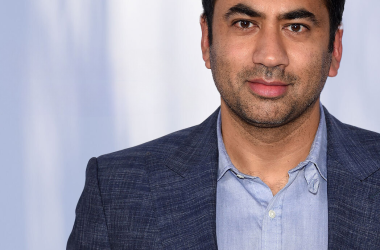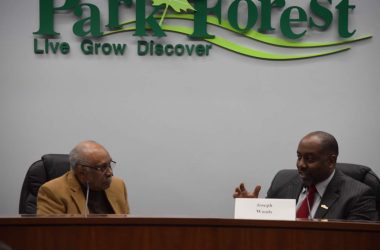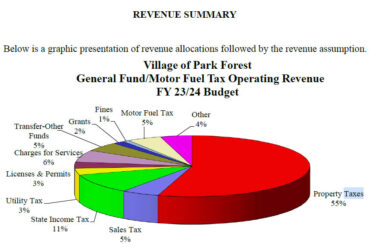 by Eric Boehlert
by Eric Boehlert
Last week, two breaking news events competed for attention from the national news media, and particularly from the 24-hour cable television outlets.
In one, disgraced financier Bernard Madoff, who was arrested months ago for defrauding investors out of billion of dollars, appeared before a judge in New York and pleaded guilty. The judge revoked Madoff’s bail, and he was sent to jail to await his June sentencing.
In the other, a deranged 28-year-old, Michael McLendon, armed with a pair of military-style assault weapons and high-capacity ammunition magazines taped together, went on a killing spree in southern Alabama. It began when McLendon shot and killed his mother and set her house on fire (with her inside) and ended when he killed himself two hours later. In between, McLendon killed family members sitting on the porch of his uncle’s house. He killed a young mother and her child, who lived next door. He killed his great-aunt, then a random pedestrian and a woman coming out of a gas station, and opened fire on a hardware store, killing another man. The massacre represented the deadliest shooting spree in the state’s history.
Which event was more newsworthy and compelling? Madoff going through the formality of pleading guilty to a crime that was uncovered in December? Or a madman terrorizing towns in Alabama? And specifically, which one do you think television news outlets, which gravitate toward compelling images, would embrace? The wild, chaotic scenes following the shooting spree in Alabama, or the Madoff story, where cameras were not even allowed inside the courtroom and Madoff himself appeared in public view for less than 10 seconds during his perp walk outside the courthouse?
The answer is that the Madoff story received far and away more media coverage, especially television attention. According to a search of TVEyes.com, the white-collar story grabbed four times as many on-air mentions last week from the all-news channels as the Alabama story.
Killing sprees, especially the ones that have erupted since the Virginia Tech massacre of 2007, just don’t hold journalists’ attention like they used to.
Even more telling was the way the press avoided addressing the issue of gun control in connection with the Alabama rampage. There was a virtual media ban on the topic last week. And that’s become the media’s trademark pattern when covering the mass murders that stain the country — they’re treated as though they’re isolated incidents and as though there is no larger public policy issue that ties them together. The press has pretty much embraced the old NRA mantra: Guns don’t kill people. People do.
Indeed, the press now covers shooting sprees the way it covers killer tornadoes: They’re one-day stories, they’re acts of nature, and all people can do is try to stay out of the way.
Although, as the Alabama massacre suggested, the press seems to have lost interest in the topic in recent years, I suspect most people are aware that gun violence remains an American epidemic, and one that has expanded well beyond urban areas. Nearly 30,000 Americans die each year from guns. (More than 1 million have died since 1960.) Another 70,000 are wounded annually. And gunshot wounds cripple our health-care system under the strain of nearly $2 billion in hospital costs each year.
Obviously, in a country where approximately 80 people die each day from guns,* the press can’t, and doesn’t, cover every killing. It doesn’t even try. But for years, there had been a general newsroom understanding that because of the unique circumstances surrounding killing sprees, where madmen loaded up with assault weapons and ammunition and set out to kill — to execute — often random and always innocent people, those events represented blockbuster stories. And that those stories also represented a large enough news hook that related topics, such as gun control, could be introduced into the coverage. Not in an activist way, but as an obvious topic of discussion and exploration.
But no longer. For much of the media, the killing sprees are what they are and nothing more. In fact, as the massacres seem to increase in frequency — Crandon, Wisconsin; Kirkwood, Missouri; Arvada, Colorado — the press gives them less attention and sets aside almost no time and space for introspection. It seems gun advocates have cowed the press corps.
Here’s an example. The Alabama killings erupted in the late afternoon on March 10, and the gruesome story was too late to make the network newscasts. That evening, ABC’s Nightline opened its program at 11:30 Eastern Time with a brief report about the breaking massacre news, a report that lasted less than 90 seconds. The next evening, Nightline did not return to Alabama for a follow-up on the massacre story, so its 90-second report represented the entirety of its coverage. And that means that during those two nights of programming, Nightline devoted far more time to stories about breeding show dogs, Amazon.com’s founder, Michelle Obama’s magazine-cover appearances, tips for selling your home, recent financial losses suffered by famous billionaires, the breakup of Bristol Palin and her fiancé, and the misery of Zimbabwe.
All of those stories received vastly more time and attention than the historic Alabama bloodbath.
Or consider the story that broke on the morning of June 25, 2008, when Wesley Higdon, angry about a workplace dispute over safety goggles and cell-phone use at the Atlantis Plastics plant where he worked in Henderson, Kentucky, retrieved a semiautomatic handgun from his car, killed his supervisor outside the plant, and then went inside and fatally shot employees in the break room. Six died, including Higdon, who shot himself. Another person was injured.
In the 36 hours after the shooting, the story was mentioned just two dozen times on CNN, MSNBC, and Fox News combined. Incredibly, the workplace massacre did not even make the newscasts that night on CBS and NBC. The two networks did not consider the Kentucky rampage killing, which left six dead, to be worthy of mention on the evening news.
National newspapers weren’t much more interested: The New York Times gave the story just 400 words; The Washington Post, 200. The Los Angeles Times squeezed in a 130-word report.
Two quick points here. First, I’m not suggesting that all the recent U.S. killing sprees featured guns that were obtained illegally. Or that with tighter gun-control laws, killing sprees would be eliminated. They would not. But the fact that guns are so easily available today, legally and illegally, ought to represent a newsworthy topic for the press when madmen snap and go on rampages.
Second, I understand the argument that if more politicians (read: Democrats) aggressively lobbied for gun control, the way they did in the 1990s, then the issue would receive more press attention. But that argument assumes that because politicians have publicly pulled back on the issue, it’s not up to the media to initiate the debate. And to that, I say, “Baloney.” Did Woodward and Bernstein wait around for Democrats to make a big deal about the Watergate break-in before they started investigating? Of course not, because the press is supposed to act independently of political parties. Besides, even if some Democrats have been scared off the topic, there’s no shortage of gun-control advocates who would be willing to address the issue in the press. So quite clearly, it’s the press that’s walked away from the topic in recent years.
And the withdrawal has been dramatic. When the Columbine killers unleashed their fury inside a suburban Denver high school in April 1999, killing 15 and wounding more than 20, the horror show set off all kinds of media-driven debates about gun control. Ten years later, the press couldn’t care less about the issue. Checking through TVEyes and the Nexis database, in the first 36 hours of coverage following the Alabama shooting, I could not find a single newspaper or television report about the massacre that even mentioned “gun control.” For the press, the issue does not exist. Period.
But look at how The Wall Street Journal dealt with the equally chilling rampage that unfolded last week at a German high school, which left 16 people dead:
A shooting rampage that began in a southern German school on Wednesday and left 16 dead is likely to stoke fresh debate in Europe about gun control and public security.
In the very first sentence, the newspaper announced the massacre was sure to prompt a fresh debate about gun control in Germany, which only made sense, right? (How did the killer get the gun? Did he take advantage of a loophole? Etc.) But the AK-47-fueled massacre in Alabama? Not a chance. The issue of gun control went unmentioned in the American press.
Meanwhile, when the press has bothered to address the issue in recent years, it’s often been from a completely skewed perspective. For instance, looking back at CNN’s Virginia Tech coverage from April 2007, one of the few on-air debates about gun control that I could find featured a gun-control advocate as well as a gun-rights advocate. The two didn’t really debate whether laws should be tightened to make it more difficult for people to get guns; they debated whether laws should be loosened so that more people could carry guns in places like college campuses.
After a mentally ill student, Seung-Hui Cho, had made a mockery of Virginia’s gun laws by falsifying his gun-store background check and killing 32 people with the guns he purchased illegally, CNN presented a debate in which an activist arguing that the United States needed to relax its gun-control laws was given equal time to an activist who urged that the country tighten its gun laws. The pro-gun advocate, who represented a radical minority in America, was put on the same footing as the gun-control advocate, whose views reflected the clear plurality of Americans, who have consistently called for stricter gun laws. That’s how CNN chose to frame the debate in the immediate wake of the Virginia Tech massacre.
Time did the same thing. Two days after the April 16, 2007, rampage, Time.com published a puff piece about how gun advocates saw the massacre as a political opening — “a call to arms” — to get existing gun laws relaxed and overturned — about how the NRA felt it had political momentum coming out of the mass executions at Virginia Tech.
And more recently, ABC News also hit that angle. For an April 2008 report commemorating the mass killing on the Virginia Tech campus, ABC chose to shine a spotlight on activists who, in the wake of the campus massacre, were trying to loosen U.S. gun laws, who wanted college students to be able to carry weapons to class.
Left unreported in that kind of gun coverage is the fact that relaxing gun laws in the United States represents a radical, out-there idea that’s supported by just a tiny fraction of Americans. Not even gun owners in America want to make the laws less restrictive. (Just 15 percent back the idea.)
But at least in those instances, the topic of gun control was actually addressed. I remember watching the endless Virginia Tech coverage in 2007 and being struck by the nearly uniform lack of debate about the issue. I wasn’t alone. At CBS News’ online forum, The Public Eye, Brian Montopoli wrote on April 25, 2007:
In order to delve into a big issue, the media usually needs what’s known as a “hook” — a news event that focuses people’s attention on larger questions. The tragedy at Virginia Tech is such an event.
There were reasons not to take up larger issues and assign blame in the immediate wake of the shootings — those first few days needed to be about how people were dealing with the horror of what had taken place. But some time has now passed, and I’m hard pressed to think of a better time for the media to focus on a huge issue that isn’t going away anytime soon.
The issue, obviously, has not gone away. It’s only intensified. But the national media’s interest in addressing it has largely vanished.
Aside from the rampages that I’ve already referenced above, here are the details surrounding just 10 of the more than two dozen killing sprees that have unfolded in the past two years, which have transformed America into a Rampage Nation. They’re stories the press pays increasingly little attention to, stories that, from the media’s perspective, don’t add up to any kind of larger, newsworthy trend:
February 12, 2007
With a belt full of shotgun shells under his trench coat, a backpack of ammunition slung over his shoulder, and two guns at the ready, 18-year-old Sulejmen Talovic stepped out of his car at the crowded Trolley Square shopping mall in Salt Lake City and immediately began shooting shoppers. Talovic was killed by police. Six dead, four wounded.
October 7, 2007
After arguing with his ex-girlfriend at a late-night party in the small town of Crandon, Wisconsin, off-duty sheriff’s deputy Tyler Peterson went to his truck, got his police-style AR-15 rifle, forced his way back into the apartment, and fired about 30 rounds. He was later killed in a shootout with police. Seven dead, one wounded.
December 5, 2007
A 19-year-old gunman, Robert Hawkins, arrived at the Westroads Mall in Omaha, Nebraska, just before 2 p.m. with a stolen AK-47-style semiautomatic weapon concealed under his sweatshirt and began randomly shooting holiday shoppers inside the Von Maur department store. Then he shot himself. Nine dead, five wounded.
December 9, 2007
Armed with an assault rifle, two handguns, a backpack filled with bullet clips for 1,000 rounds, and smoke bombs, Matthew Murray opened fire on the Youth With a Mission training center in Arvada, Colorado. Hours later, wearing black combat boots and SWAT-style black cargo pants, Murray fatally shot parishioners outside the New Life megachurch in Colorado Springs, and then stormed inside, where he was shot by a security guard. Murray then killed himself. Five dead, five wounded.
February 7, 2008
Feuding with town officials in Kirkwood, Missouri, contractor Charles “Cookie” Thornton barged into a council meeting and killed two policemen and three town officials. Thornton was killed by police. Six dead, two wounded.
February 14, 2008
Dressed in black, graduate student Steven Kazmierczak, who had battled mental illness much of his adult life, carried three guns with him (a Glock 9 mm, a Sig Sauer .380, and a Hi-Point .380) when he walked onto the stage at Cole Hall Room 100 at Northern Illinois University at the conclusion of Intro to Ocean Science and started showering the lecture hall with bullets as students scrambled for the exits. Kazmierczak then killed himself. Six dead, 18 wounded.
September 2, 2008
Isaac Zamora, described by his mother as “extremely mentally ill,” stole a gun and a pickup truck and went on a killing spree in Washington’s Skagit County, randomly shooting people, including a sheriff’s deputy. Six dead, four wounded.
December 24, 2008
Dressed as Santa Claus, Bruce Jeffrey Pardo knocked on the door of his ex-wife’s parents’ house, then quickly opened fire on the holiday party inside. A young girl was among the first Pardo targeted, with a gunshot to her face from his semiautomatic handgun. After torching the home, Pardo drove to his brother’s house and killed himself. Ten dead, three wounded.
February 14, 2009
Frank Garcia, who had been denied a permit to carry a concealed gun three times, is accused of going on a killing rampage outside of Rochester, New York, on Valentine’s Day. Garcia is accused of using a .40-caliber Glock pistol to kill a former co-worker and a passer-by in the parking lot of the hospital where Garcia used to work, and then driving to a nearby town, where he held a couple hostage in their home before killing them execution-style as their children watched. Four dead, one wounded.
March 15, 2009
A Miami man, Guillermo Lopez, barged into a birthday party for his estranged wife’s boyfriend. An argument erupted. Lopez cornered some partygoers and opened fire, killing four people, including his estranged wife and her boyfriend. Lopez drove to his home, set his pickup truck and house on fire, and killed himself. Five dead.
*Correction: I previously wrote that this figure does not include gun-related suicides. That assertion was incorrect, and I regret the error.[back to item]








